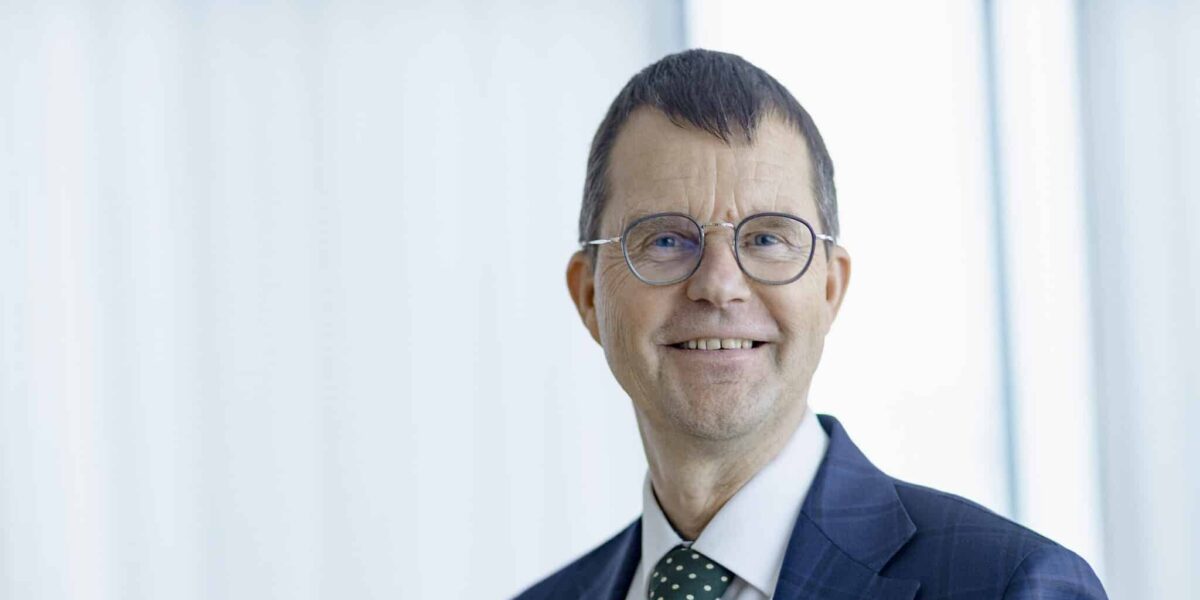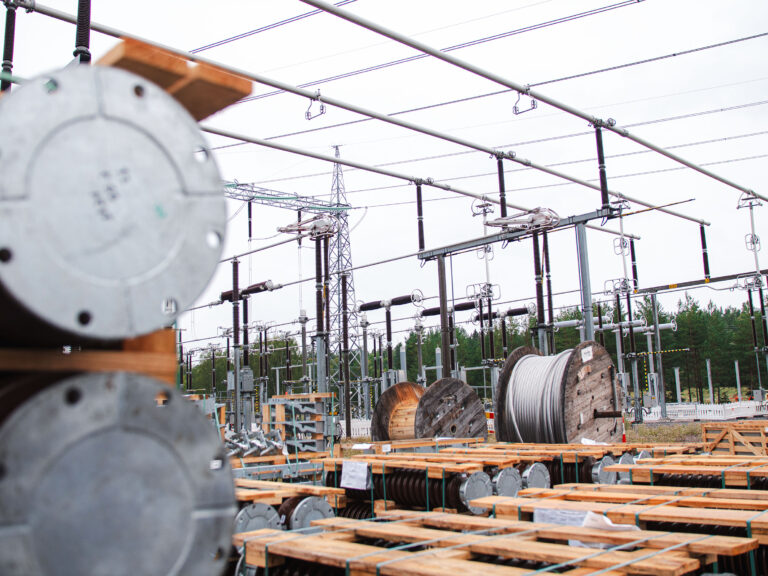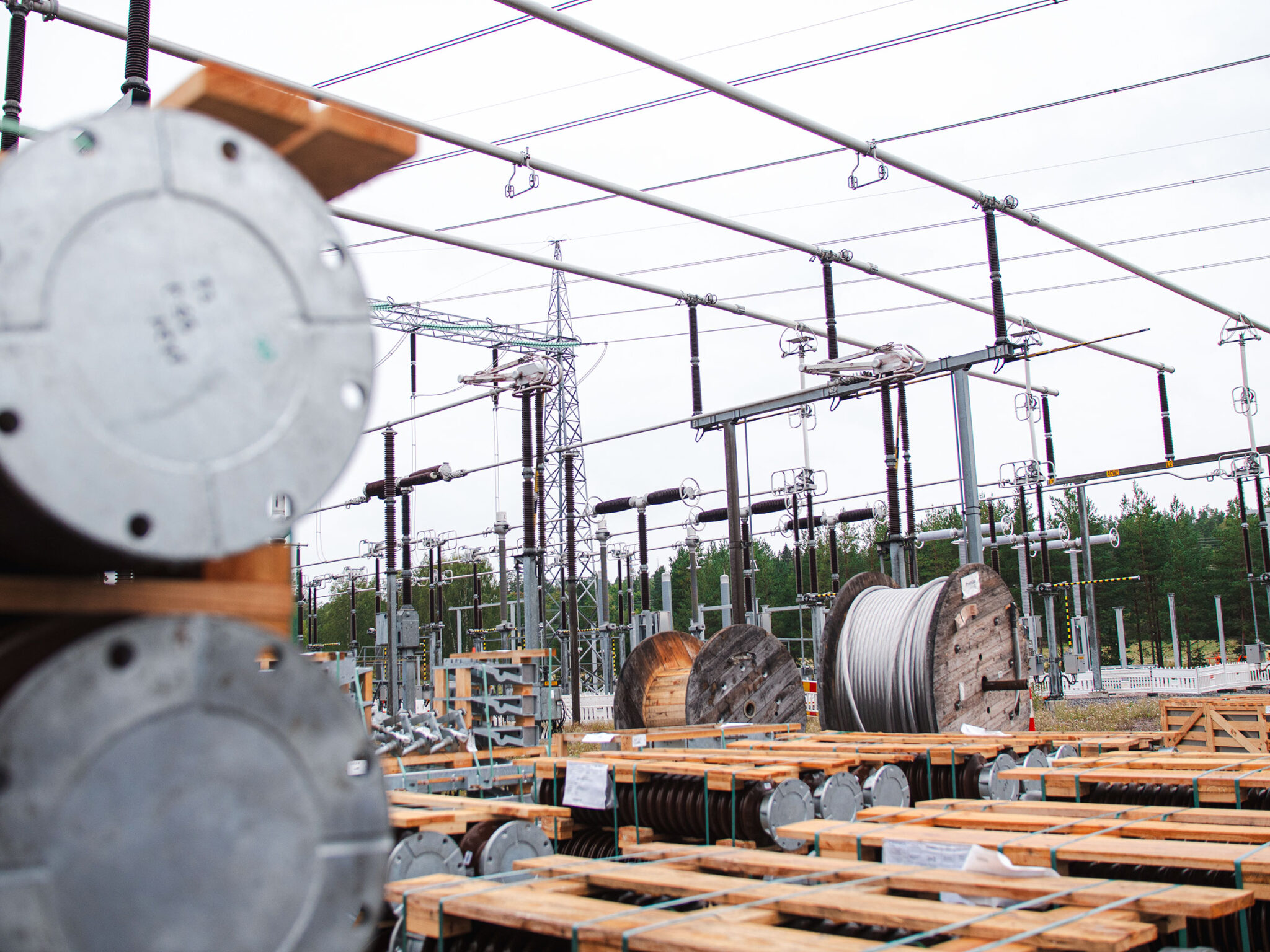Finland is powered by electricity. Finnish industry, services and homes are completely dependent on electricity. That is how it is today.
Finland will become much more reliant on electricity as we eliminate emissions from industry, heating and transport as part of Finland’s goal of becoming carbon neutral. Electrification is the most effective route towards zero emissions. In practice, this means that electricity consumption will increase on an unprecedented scale. Therefore, reliable, affordable and clean electricity is more important than ever.
The rising demand for electricity must be satisfied by increasing electricity production. A dramatic shift is taking place in the electricity production structure as wind power has rapidly become an important source of electricity. The future also looks bright for solar power.
In combination with the present power system structure, the developments now underway will promote the diversity of Finland’s electricity production. Finnish production is ready to meet the challenge of providing an increasing volume of reliable, affordable and clean electricity.
Electricity production and consumption must always be in balance.
There are plenty of changes on the horizon, but one thing remains constant: electricity production and consumption must always be in balance. That is, at every possible moment. The other unchanging fact is that electricity is transmitted from production to consumption through an electricity network. Not wirelessly.
They say that good players also have luck on their side, and the European Union seems to have been blessed with luck. In the 1990s, European Union member states began opening their electricity markets to competition. Until then, national markets were mostly in the hands of state-owned monopolies.
The thinking behind this was that increased competition would lead to more efficient operations and greater freedom of choice for consumers, thereby lowering electricity prices. Market integration and cross-border competition were key factors in boosting efficiency. The European Union has followed a determined policy of opening and developing markets ever since. The results have been good, and development continues. The timing could not have been better!
Much has been accomplished. The dismantling of national monopolies, the unbundling of electricity transmission from production and sales, cross-border competition, fair access to markets, electricity prices based on the balance between production and consumption, and freedom of choice for electricity consumers. These are the elements required for the power system of the future described above.
This system can easily accommodate increasing activity among consumers as electricity users, electric car drivers, solar power producers, and electricity storage operators. Consumers can rely on the “invisible hand” of the market, which provides them with the most flexible way of realising their electric futures. As buyers and sellers of electricity. On their own terms – not just directed by some kind of “authority” above them.
The platform for a functioning electricity market: the grid and market mechanism
In open markets, the focus is on the free movement of electricity within the country and at its borders and on mechanisms for striking an optimal balance between production and consumption. A strong electricity network enables electricity to move freely and promotes competition.
When the market was liberalised, one of the most important decisions was to unbundle electricity transmission from electricity production and sales. Electricity transmission is the responsibility of an “independent system operator” working under the supervision of the energy authority to build and operate the electricity network in a way that serves the functions of the electricity market as well as possible. Electricity production and sales are competitive businesses.
Like a computer, a “market platform” consists of hardware and software. The electricity network is the platform’s hardware, allowing electricity to move as freely as possible without any bottlenecks to restrict transmission. The operating system that moves electricity around is a market mechanism that efficiently guides production, consumption, grid energy storage, and the use of transmission capacity.
In the day-ahead market the electricity price in each hour of the following day is determined according to supply and demand bids.
The most important cog in the market mechanism is the day-ahead market, where the electricity price in each hour of the following day is determined according to supply and demand bids from market participants – a textbook example of fundamental economics.
At the pan-European level, it is this mechanism that identifies the most efficient balance between the production of thousands of power plants and the consumption of countless electricity users while accounting for the capacity of the transmission grid all over Europe. Pretty incredible!
Active, self-actualising market participants
In a free market, the market participants – electricity producers and consumers – make independent decisions on their own terms and assume the risks of their decisions.
Producers offer their electricity production to the market in line with their production plans, taking into account the peculiarities of their production technologies. Electricity consumers purchase the electricity they need in the market at the lowest price available to them while using their capacity for flexibility in response to price changes. Electricity consumers whose needs are more flexible will be able to purchase electricity more cheaply.
This is all the more important as market volatility rises in step with the expansion of renewable energy production that is inherently variable. The market mechanism – “the invisible hand of the market” – reconciles the needs of producers and electricity consumers in the most efficient way. At the European level.
It is important for producers and consumers to control their risk levels. They do this using derivatives markets. That is why functioning derivatives markets with good liquidity are an essential aspect of a functioning electricity market.
The independent system operator guarantees that new entrants have fair access to the market, which is vital for effective competition. The entry threshold is low, enabling new players to join the market. The recent upsurge in the number of new wind power operators in Finland is evidence of this. This would have been totally out of the question in the halcyon days of monopoly!
A functioning electricity market also serves consumers.
A functioning electricity market also serves consumers. The simplest market interaction is for a consumer to purchase electricity on a “spot price contract”. In this case, the consumer adjusts their electricity consumption to benefit from fluctuations in the electricity price by consuming electricity when it is cheapest.
Traditionally, this scheduling of consumption is used for heating homes and domestic water, but the electrifying future will open the door to new opportunities for consumers. For example, electric cars should be charged when electricity prices are low. In the future, many consumers will produce solar power, either independently or as part of an energy community.
In an open market, solar power producers can consume the electricity they produce or sell it to the market at the prevailing market price. And consumers who have access to electric batteries can adapt their use of the battery according to their electricity needs and the market price. Individual consumers are probably unaware that they are active participants in the European electricity market. How could all of this have been achieved back in the times of monopolies?
Where do we go from here?
The electricity market has been operating for almost 30 years. Having emerged from its rebellious adolescence, the market has become stable and established.
The electricity market has successfully fulfilled the tasks assigned to it: using competition to increase efficiency and innovation, use resources more efficiently, and generate benefits for customers and society. As the electricity system evolves and becomes the core of the entire energy system, the market must develop in line with new needs.
Russia’s invasion of Ukraine was the largest shock the European energy system has ever encountered. Gas prices reached unprecedented heights, causing the electricity price to rocket. This prompted some to declare that “the electricity market is broken” and other dramatic statements to that effect.
However, the market mechanism functioned exactly as it was supposed to: production prices increased, so the price of the commodity also went up. It is clear that highly abnormal events can lead to problems with income distribution, but that is not the fault of the market mechanism.
In an open market, it is survival of the fittest.
Amid the criticism, it is important to note that open markets and competition are not in everyone’s interests. In an open market, it is survival of the fittest. The ones who are not strong enough to compete will point to the extraordinary circumstances around them and try to regress towards a centrally-controlled market. There are clear signs of the empire striking back.
The present market mechanism is so deeply ingrained in the functioning of the power system that it would be really difficult to switch to a centrally-controlled model. And there would be no guarantee that an alternative model would work.
Thirty years of practical free-market operation is strong evidence of the wise choices made in the 1990s and one of the most important innovations in the power system.
Jukka Ruusunen
The author is the CEO of transmission system operator Fingrid.







